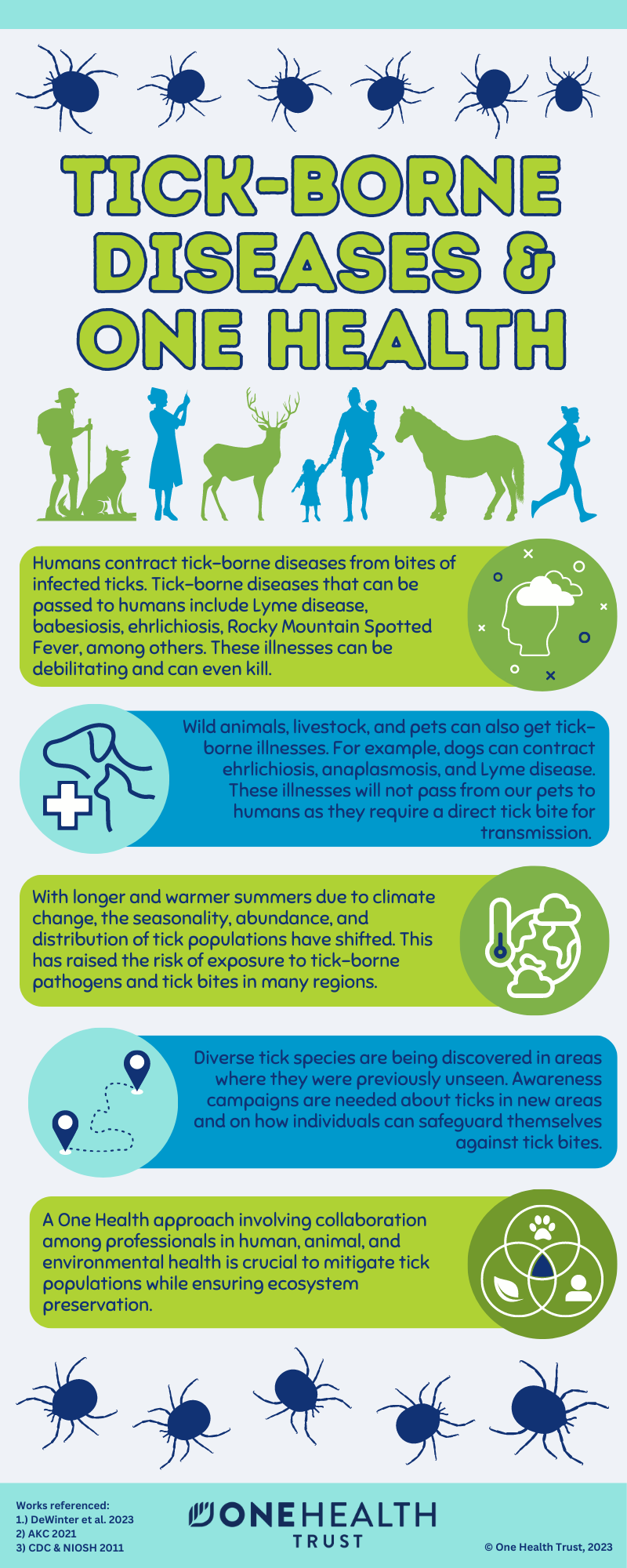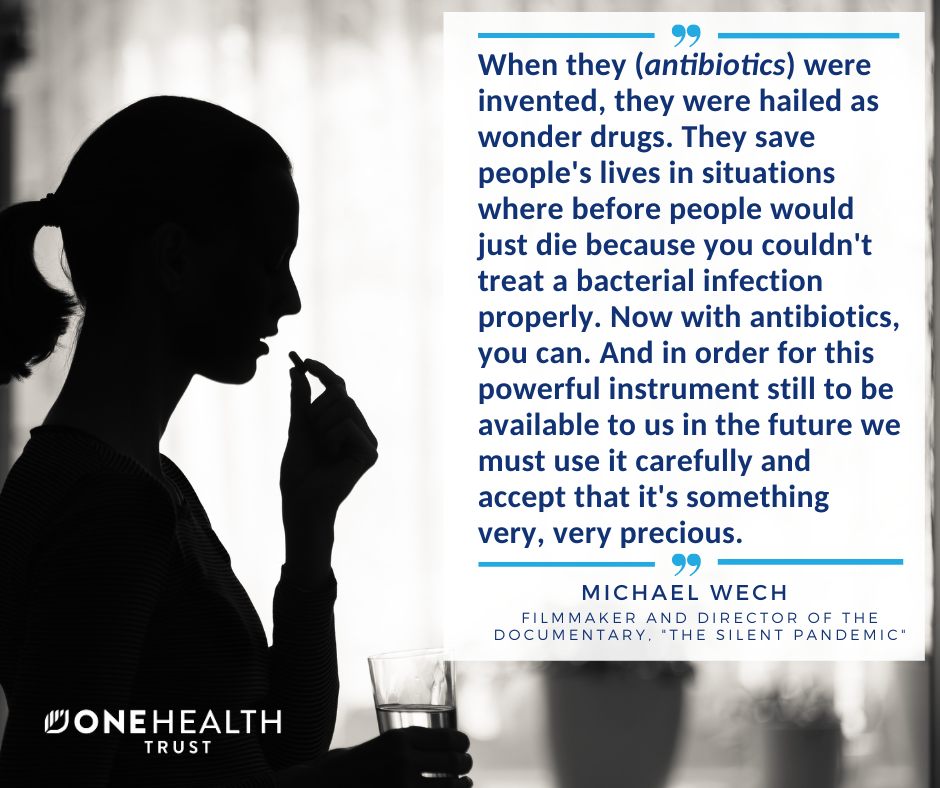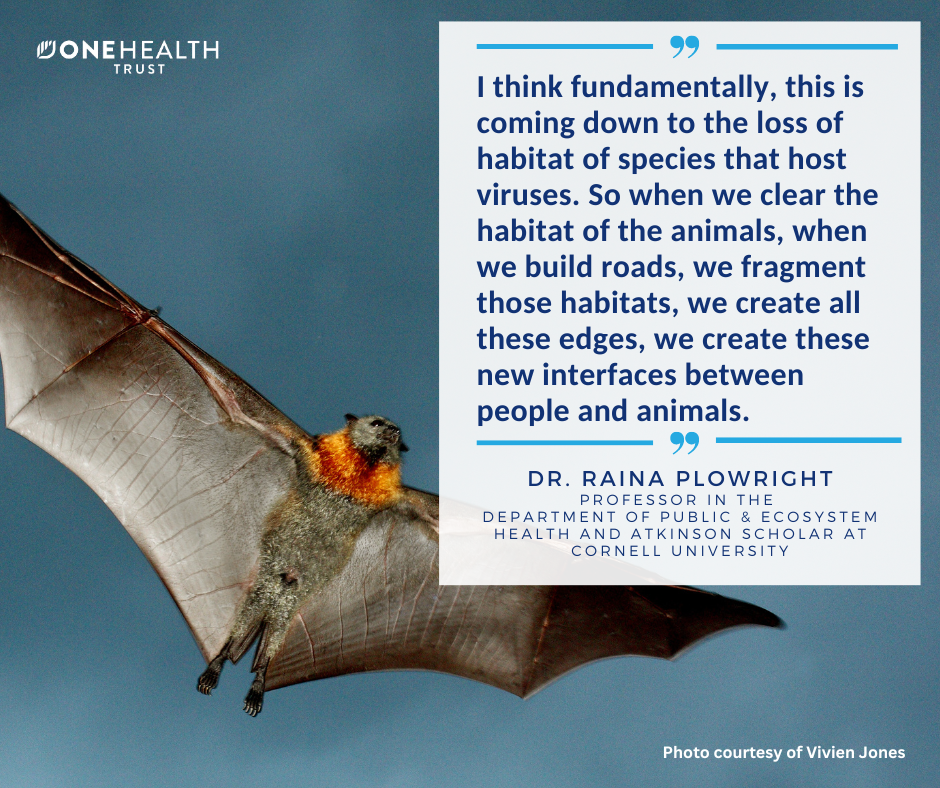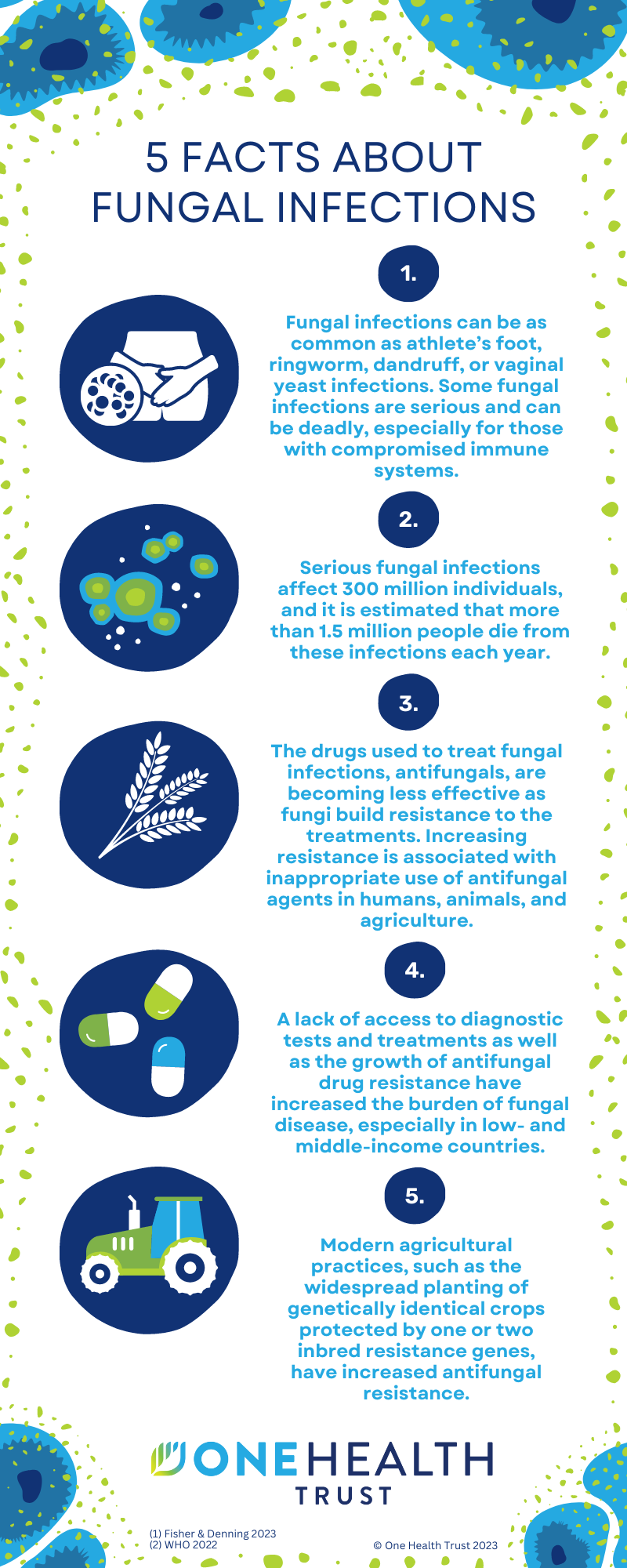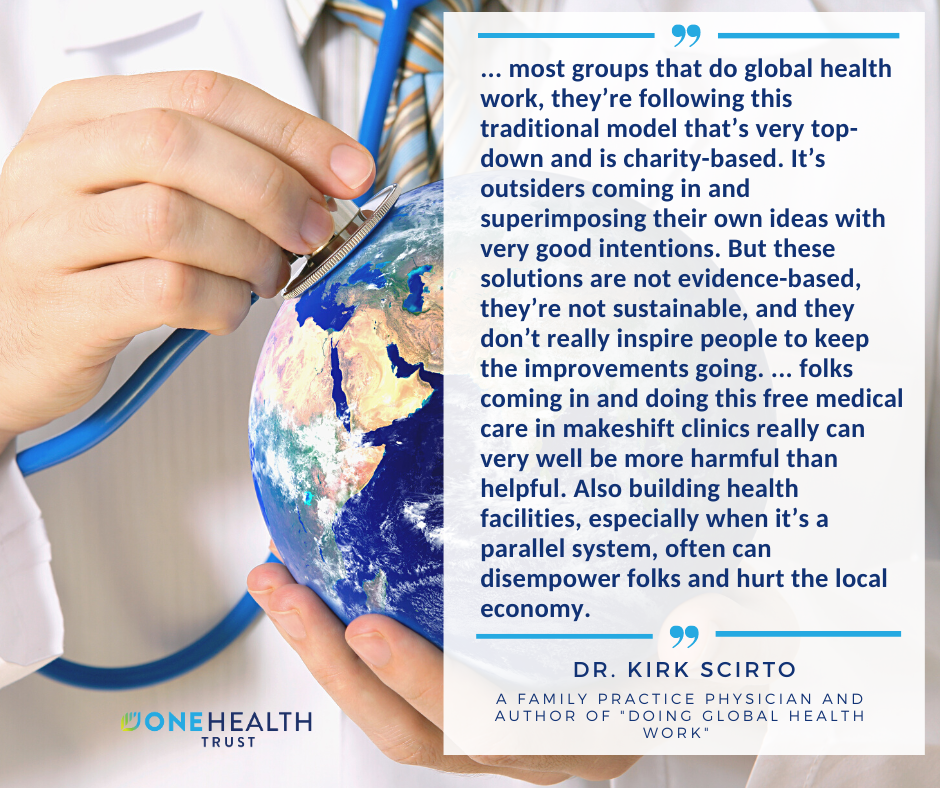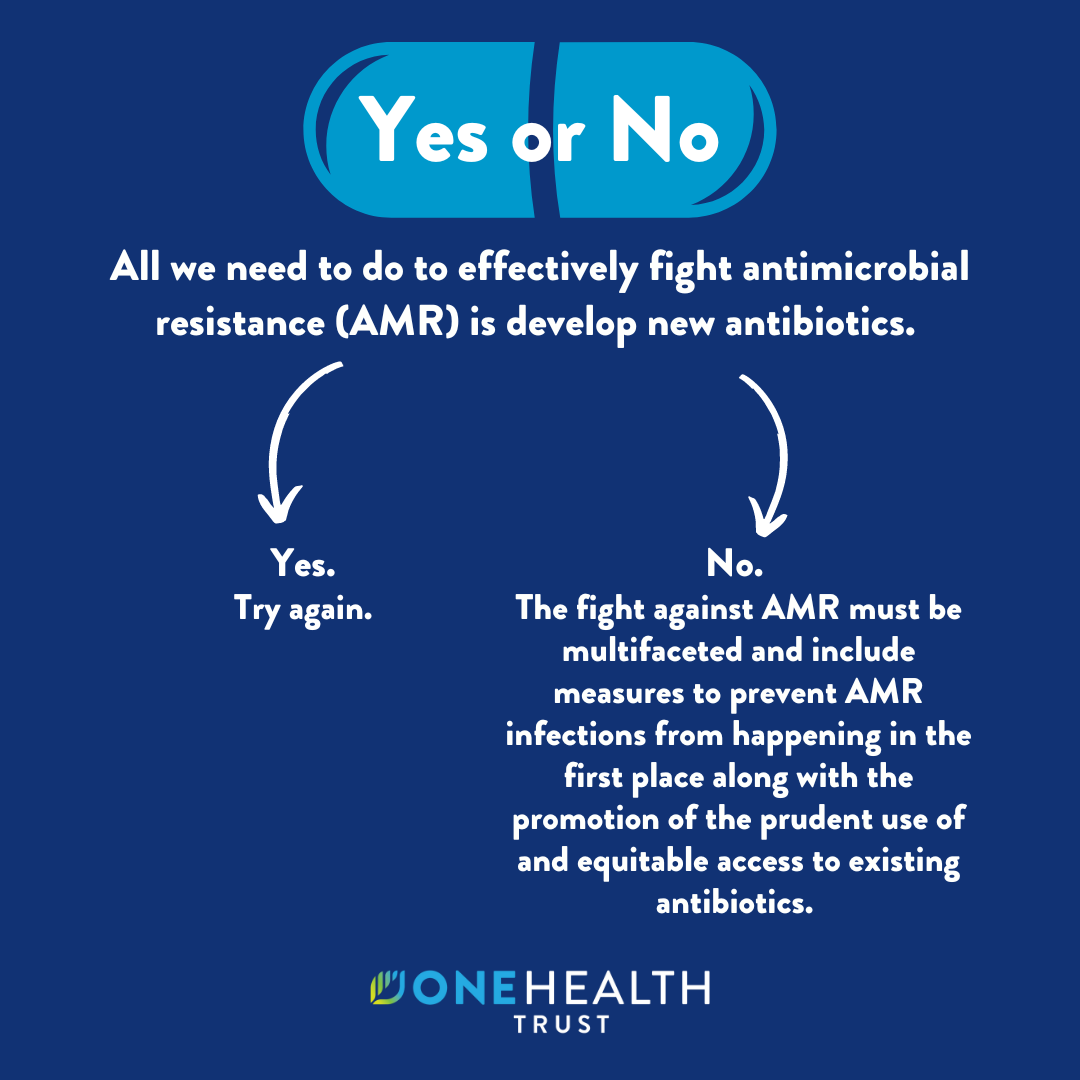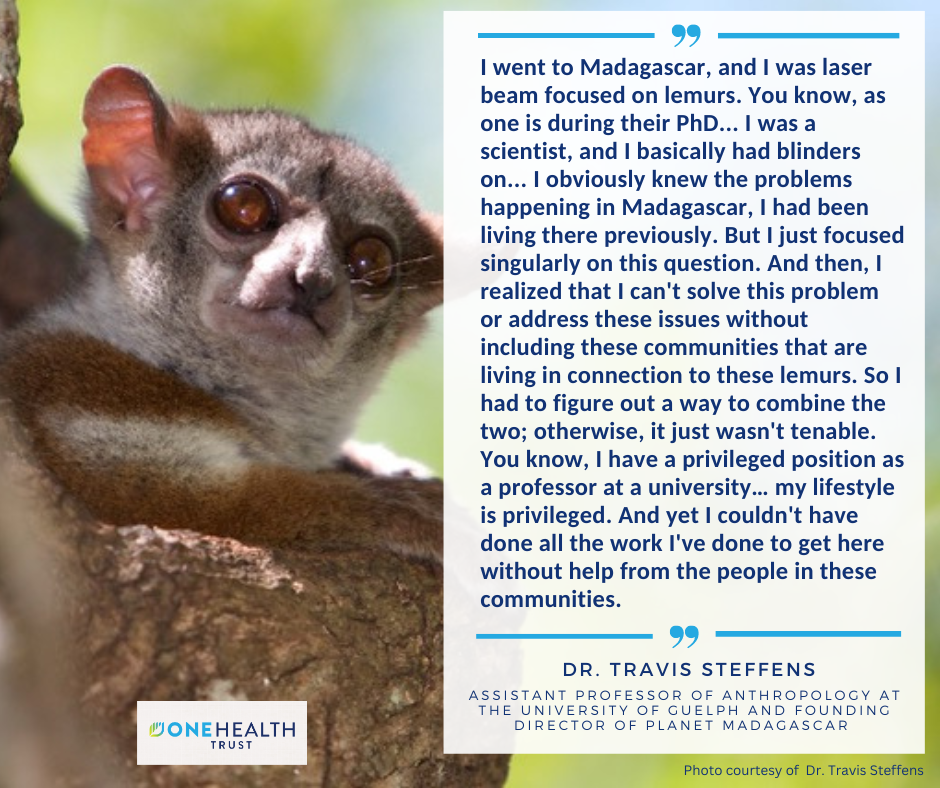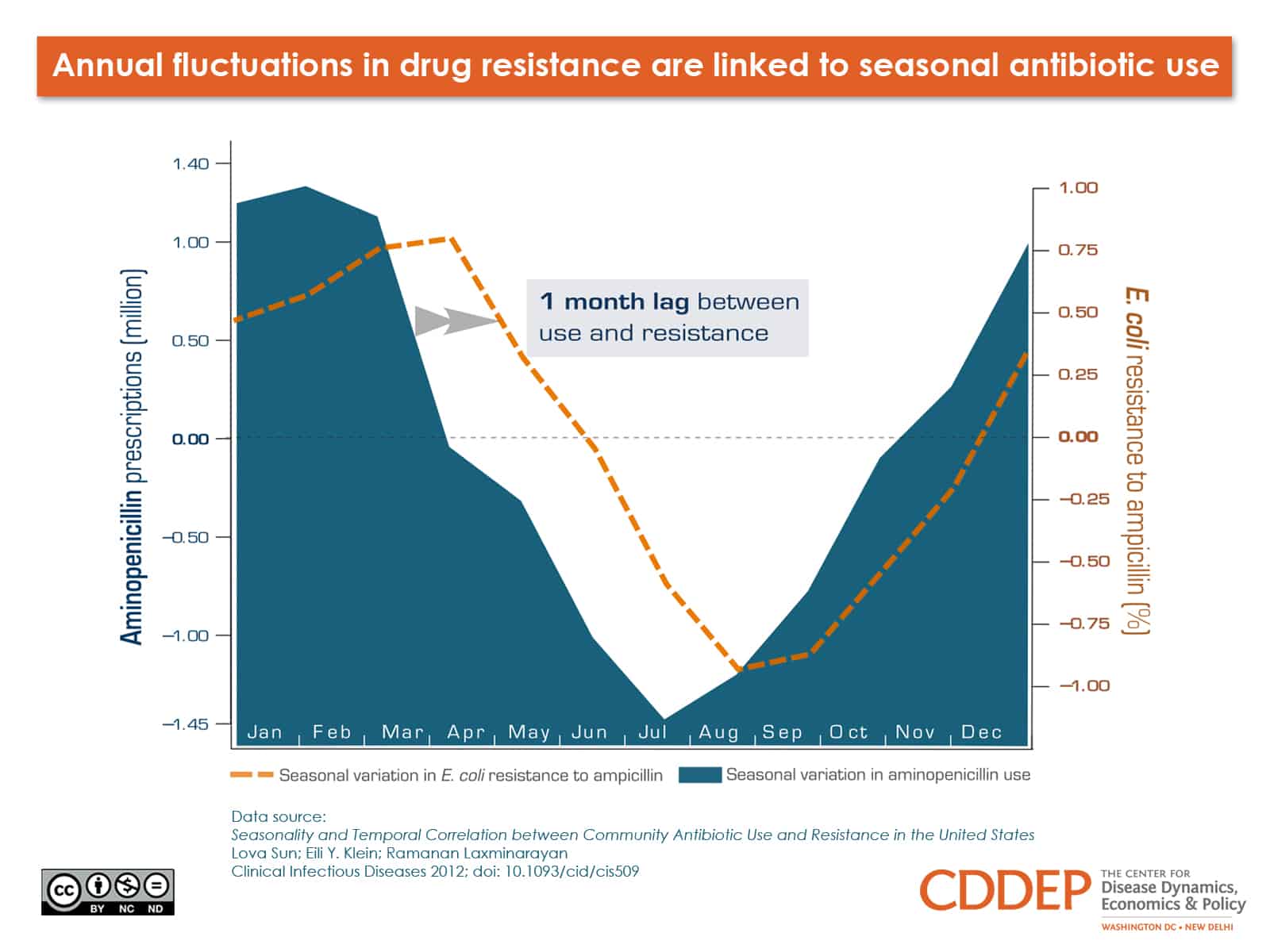
June 22, 2012
Outpatient antibiotic use is a key driver of antibiotic resistance. Previous research has highlighted the peak of prescribing during flu season, as well as the geographic link between high annual rates of antibiotic consumption and pneumococcal resistance to macrolides. However, little is known about the month-to-month seasonal relationship between use and resistance.
The graph shows seasonal fluctuations in aminopenicillin prescribing in the community alongside rates of ampicillin resistance in E. coli among hospital patients. Prescriptions for aminopenicillins the most popular antibiotic class in the US, including the drug Amoxicillin peaked in February, at the height of the flu season. E.coli resistance rates to the same drug class moved in parallel with approximately one month s lag. The analysis used over ten years (1999-2010) of nationally-representative data and advanced statistical techniques that allow for the inference of causality, and also finds similar patterns for methicillin-resistant S. aureus (MRSA). The causal link between outpatient use and the rise of resistance in hospitals underscores the need for stewardship programs that span both the hospital and community setting. The winter peak in the relationship suggests that the effect of use on resistance can be curtailed by means of strengthening influenza vaccination efforts.

